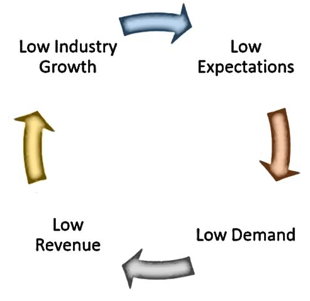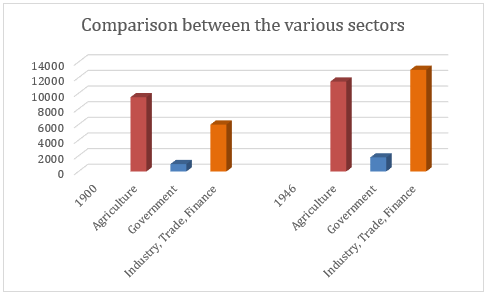Introduction of Indian Economy on the Eve of Independence
The structure of India’s present-day economy is not the result of the current conditions, it has its roots dating back to history, particularly the State of Indian economy on the eve of Independence. India was a British colony before its independence.
Colonialism here refers to a system of political and social relations between two countries of which one is the ruler and the other is its colony. The ruling country not only has political control over the colony but also determines the economic policies of the subjugated country.
The sole purpose of the British colonial rule in India was to reduce the country to being a supplier of raw materials for Britain’s booming markets and its rapidly increasing industrial base.
Economic Conditions under colonial rule and the state of the economy on the eve of independence
India had an independent economy before the advent of British rule. It had its own flourishing markets; the livelihood of people was mainly based on agriculture.
Handicrafts and textile industries of India along with metallic work industries enjoyed a worldwide market. Things were all going well, till the British established power in the country.
British exploitation of India
The British had exploited India over a period of two centuries but the form of exploitation was not the same throughout the period.
a) Firstly, East India company indirectly caused plunder under the guise of trade. India was forced to be a producer of raw materials and export raw materials to Britain.
b) Secondly, under the East India company land revenue was an instrument of plundering the peasants, land settlement systems were introduced by the British Government under which land revenue rates were high and small farmers were forced to pay such high revenues to the officials and the Zamindars, under the Zamindari system. They were thus left looted.
c) Thirdly, the corrupt and unscrupulous officers of the East India Company adopted all possible means to make large fortunes; and
d) Post-acquisition, the Diwani rights for the civil administration of Bengal, Bihar, and Orissa, British officers constantly kept exploiting the local people, mainly peasants and farmers of these states.
The colonial government did not make any sincere attempt to measure the national and per capita income of India. This was tried by some individuals, which yielded conflicting results.
One of the most notable attempts was done by Dadabhai Naoroji who wrote about it in his book, ‘Poverty and Un-British rule in India.’
State of the Indian Economy on the eve of independence with reference to the various sectors
State of Indian Economy on the eve of independence with reference to the agricultural sector
The period on the eve of independence was basically characterized by agrarian domination of the Indian economy. About 85% of the population survived on agriculture as their main occupation.
However, the sector faced consistent struggle on the following grounds.
- Low Productivity of crops due to agricultural deterioration.
- The sector suffered from stagnation due to the introduction of land settlement systems by the British Government authorities. For example, the introduction and implementation of the Zamindari system in parts of the Bengal presidency saw the drain of profits from the cultivators to the zamindars. This caused misery and social tension.
- Due to the commercialization of crops (production of cash crops in large amounts for purpose of export in the foreign markets), there was evidence of a relatively high yield of cash crops. However, this hardly helped the small farmers and hardly added anything to improve the economic condition of India on the eve of independence.
- Small farmers neither had resources nor technology to improve the agricultural produce.

Indian Economy on the eve of independence with reference to the industrial sector
Condition of the Indian industrial sector
The condition of the Indian industrial sector was almost similar to that of agriculture. India failed at developing a strong industrial base under colonial rule. Rather, the Britishers did not let that happen mainly due to two following reasons, which resulted in ‘De-industrialization’ and a subsequent decline in the handicrafts industry.
- Reduce India to mere suppliers of raw material to Britain so that Britain’s industrial base could flourish.
- Develop India as a market for finished British goods for which the Britishers would earn large amounts of revenue.
The decline of handicrafts witnessed massive unemployment and an increase in demand for British manufactured goods and this had an adverse effect on the Indian economy prior to independence.

Modern Industries
Modern Industries began to progress slowly in India during the second half of the nineteenth century. Cotton and Jute textile industries had their advent, cotton in the western parts of the country mainly in Maharashtra and Gujarat and Jute found its way in parts of Bengal.
The Tata Iron and Steel Company opened up in 1907. A few other industries came up after 1940. However, there was no development of major capital goods industries in the country which would enhance the production of cheap machinery.
Furthermore, the growth rate of the new industrial sector and its contribution to the Gross Domestic Product (GDP) or Gross Value Added (GVA) remained very small. Another significant limitation of the new industrial sector was the very limited connection with the public sector.
State of Indian Economy on the eve of independence with reference to the external sector
India has always been one of the most important trading nations since time immemorial. But the colonial government kept on playing with India’s trade policies, introducing restrictive trade practices and tariffs that hampered commodity production and trade.
Consequently,’ India was transformed to an exporter of primary products and an importer of finished goods from Britain.’ Britain thus maintained monopoly control over India’s exports and imports.
A large part of the trade was only restricted to the ruling country and other small parts were opened to China, Ceylon; Srilanka, and Persia; The opening of the Suez Canal in 1869 further amplified trade, and this British- India trade relations had adverse effects on India’s Balance of a Payment schedule.
Surprisingly, Our exports were more than imports but it was not for India’s growth and development, it was to meet the administrative and the war expenses of the British government. Britain’s exploitation of India led to the drain of wealth.

Fig: the condition of India towards the end of British rule
State of Indian Economy on the eve of independence with respect to the other indicators
Demographic Structure
The first census data was collected in the year 1881 by the British government. This census revealed the unevenness of India’s population growth. The death rate and birth rate both were high. The life expectance of the people was low. For India, the first stage of demographic transition (a major change in population over time) occurred before 1921 and the second stage began after 1921. But the growth in population was considerably low in the second stage.
Occupational Structure
People mainly owed their livelihood to agrarian activities. There were growing regional variations. Some parts of the country saw a shift in occupational trends from agriculture to industry and then to a certain extent to the service sector. The occupation transition was not sufficient as the other sectors were not able to provide employment opportunities and nor contributed much to GDP. Our more than 75% population was engaged in agriculture sector only.
Social Development Indicators
The social development indicators did not show encouraging results. Overall literacy Level (Total number of literate persons in a given age group, expressed as a percentage of the total population in that age group) was only at 16% with female literacy rates being more and more discouraging.
The overall mortality rate was very high, health conditions of the people saw no improvement. Malnourishment prevailed. Infant mortality rates were also alarming. The same was true for life expectancy ratios.
Basic Infrastructure
Basic infrastructure like transport and communication facilities did develop but the ultimate motive behind this was the facilitation of service of the colonial powers.
Roads were built for facilitating inland trade. One of the contributions of the British colonial rule in India was the introduction of railways in 1853. This led to the increase in the volume of exports but all of these rarely proved to be beneficial to the commoners of the nation.
General evaluation
By the time India became independent, the impact of the two-century long British colonial rule was already showing on all aspects of the Indian economy.
The agricultural sector was already burdened by the problems of surplus labor and extremely low productivity. The industrial sector needed some first-hand reforms, modernization, diversification, capacity building, and more public investment.
Trade reforms were also necessary. Discriminatory trade policies were to be done away with. The country was suffering from major poverty, malnourishment, and unemployment problems. Therefore, after independence, there were major challenges that the country had to do away with.
CBSE Economics Class 12 Notes Term I Syllabus
Part A: Introductory Macroeconomics
- Money and Banking Class 12 Notes
- Government Budget and the Economy Notes
- Balance of Payments Class 12 Notes
- Foreign Exchange Rate Notes
Part B: Indian Economic Development
Development Experience (1947-90) and Economic Reforms since 1991:- 12 Marks
- Indian Economy on the eve of Independence Notes
- Indian Economy (1950-90) Notes
- Economic Reforms since 1991 Notes
Current challenges facing Indian Economy – 10 Marks